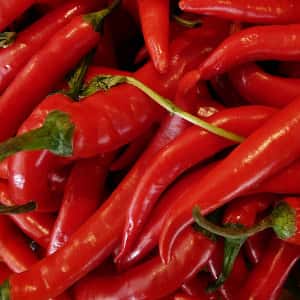
Many readers would like to learn about natural ways to control blood pressure. They prefer to avoid the expense and potential side effects of anti-hypertensive medicines. One reader without much hot pepper experience asked about using capsaicin, the essence of hot peppers.
Capsaicin for Blood Pressure Control:
Q. What’s the best way to introduce capsaicin to my diet? I chopped up a habanero pepper and that was not a good idea at all!
I’m interested in the fact that it may help with blood pressure issues. I currently take lisinopril. Would cayenne pepper pills help?
A. You really started with the big gun! Habanero peppers are among the hottest available. As a result, we assume that the one you tried was just too hot to handle, either for your taste buds or your fingers, or both.
The Science on Hot Peppers for Blood Pressure:
Increasing research shows that capsaicin improves endothelial function, a fancy way of saying it increases blood vessel flexibility (McCarty, DiNicolantonio & O’Keefe, Open Heart, June 17, 2015). As a result, it can lower blood pressure. In addition, its action on a transient receptor potential (TRP) channel, TRPV1, reduces inflammation in the lining of the blood vessels (Wang et al, Atherosclerosis, May 2017). Mice eating added capsaicin suffer fewer dangerous consequences of hypertension (Wang et al, American Journal of Hypertension, Dec. 2014).
If you enjoy the taste of hot chili peppers, you could add salsa or hot sauce to your meals. If you don’t, on the other hand, you might want to take cayenne pepper pills as your source of capsaicin. That way you would not have to deal with the heat on your tongue.
Learn More About Blood Pressure Control:
You can read about other natural approaches to managing blood pressure in our Guide to Blood Pressure Treatment.
There are many foods and beverages that can contribute to blood vessel relaxation, so you need not torture yourself with habanero peppers.

